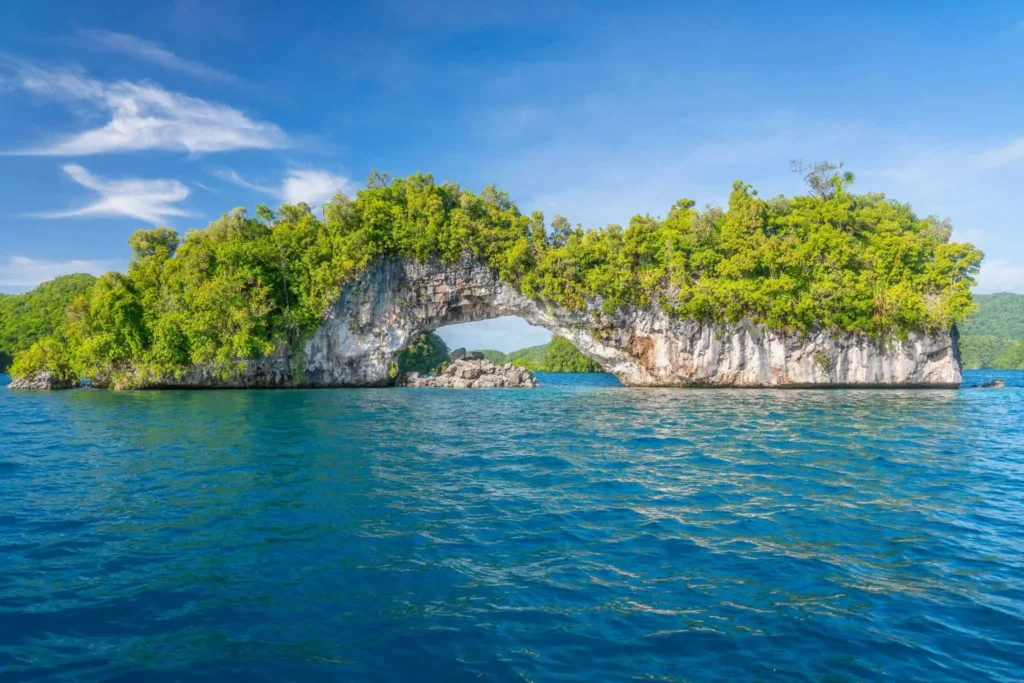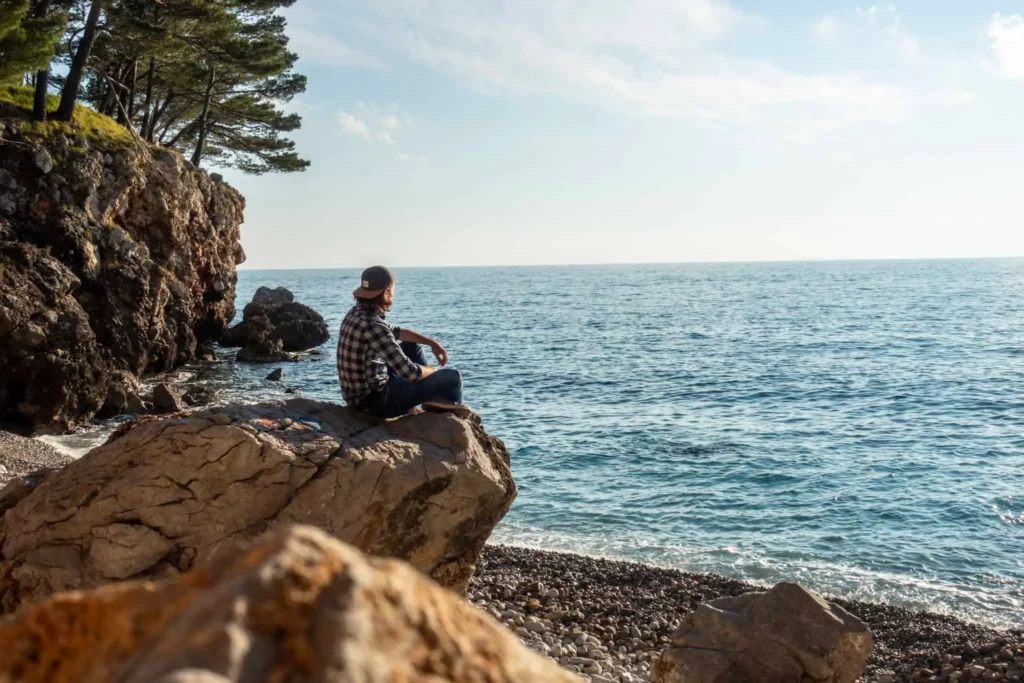| This post may contain affiliate links. Whenever you book or buy something through one of these, Giving Getaway gets a small commission, of which 100% will be donated to charity, without any extra cost to you! |
I’ve traveled to many of the well-known places in Europe such as London, Paris, and Rome, but sometimes it’s those little-known places that end up being one of the most amazing places you’ve been to. For me, the Azores has been that place, and that’s why I would like to present you my travel guide to the Azores!
I remember the first night of my online travel agent course I took a few years ago and we were asked what our favorite place was that we have traveled to. I mentioned the Azores and was surprised exactly how many of my classmates had never heard of these wonderful islands in the Atlantic Ocean. I definitely knew I made the right choice to become a travel agent as this proved to me that I do have some travel knowledge that others may not have.
The Azores first became known to me about ten years ago when it was featured in the AAA (American Automobile Association) travel magazine that they mailed out to their members. It looked like such a beautiful place that I mentally added it to the never-ending bucket list in my head.
A couple of years later a friend suggested that a group of us go check out the Azores. So in June 2013, we left Boston to explore this unknown land that had most of the people we talked to saying, “I’ve never heard of the Azores, where is that?”
1. Just the Facts
The Azores is an autonomous region of Portugal and is located in the northern Atlantic Ocean about 870 miles west of Lisbon, Portugal and it is the closest part of Europe to the United States. It’s an archipelago of nine volcanic islands grouped into three geographic areas in the Atlantic. The capital city of Ponta Delgada is located on the main island of Sao Miguel.
Due to the Gulf Stream and its distance from the mainland, the islands have a very mild climate considering how far north they are located. Daytime temperatures are generally in the 60s or 70s year-round, making it a great place to visit all year long.
2. History of the Azores
It’s believed that the islands were first discovered by Portuguese explorer Dioo de Silves in 1427, however, it wasn’t until 1439 that the Portuguese began to settle on the islands. At the beginning of the 17th century, the largest of the islands, Sao Miguel was taken over by Spanish troops but it was returned to Portugal by 1640 and at that time Ponta Delgada was named the capital. After this, the islands became an economic and agricultural hub leading to even more development on the islands.
During World War II, the islands of the Azores served as British air and naval bases, which ended up being a major turning point in the Battle of the Atlantic. In 1945, an airbase that serves both the United States and Portugal was built on the island of Terceira. The United States uses this air base mainly as a refueling station for cargo planes heading to Europe, Africa, and the Middle East. It wasn’t until 1976 that the Azores became one of the autonomous regions of Portugal.
3. Connection to Boston
To get to the Azores, there are direct flights from Lisbon and other European cities as well as from Toronto and Boston. Before traveling to the Azores, I assumed the main reason there were direct flights from Boston was due to its proximity compared to other US cities.
While traveling there, I learned that is not the only case, Massachusetts actually has quite a high population of immigrants from the Azores. Immigrants from the Azores first arrived in Massachusetts when crews from the island of Faial were recruited for the American whaling ships in New Bedford, MA before the Civil War. They later brought their families over and started to settle in southeastern Massachusetts.
In 1957, the island of Faial was devastated by volcanic eruptions and earthquakes. Massachusetts Senator John F. Kennedy helped convince the US Congress to pass the Azorean Refugee Act in 1958 to help those affected by the devastation and allow them to enter the US.
Since many of those from Faial had relatives already living in Massachusetts, many chose to settle there. Portuguese immigrants make up the largest foreign-born group from Europe in the Greater Boston Area. The things you can learn about your own home while traveling, it truly amazing how much travel can teach you.
4. Nine Azorean Islands
Eastern Group
- Sao Miguel – This is the largest of the nine islands and also the location of the capital city of Ponta Delgada. There is so much to see in Sao Miguel, you could easily spend a week on this island alone. Start your exploring in the capital city of Ponta Delgada where you can visit the historic landmarks and the Arruda Pineapple Plantation. Make sure to head to Furnas to see the bubbling geysers and try the food cooked underground in the hot springs. While in Furnas, visit Terra Nostra Park to take in the scenery and enjoy the thermal spring. The island is a beautiful place for adventure, from gorgeous lakes to hiking trails and whale watching. And for those looking to relax, visit a tea plantation or check out a thermal spa.
-
- Santa Maria – This island is known for its water sports. You can enjoy such water sports as sailing, windsurfing, scuba diving, fishing, surfing, and water skiing. Swimming is popular both at the beach and at the natural swimming holes throughout the island. Unlike the dark volcanic sand beaches of the other islands, Santa Maria is known for its white sand beaches.
Central Group
- Terceira – The second most populated island of the Azores, its capital city of Angra do Heroismo is a Unesco World Heritage Site and a must-visit on the island. Make sure to also visit Algar do Carvao where you can have the unique experience of going inside an extinct volcano. Like the other islands, there are plenty of hiking, whale-watching trips, and natural swimming pools to explore.
- Graciosa – See the historic architecture on the island, including churches dating back to the 16th century and the red windmills. A must-visit on Graciosa is Furna do Enxofre, this lava cave features a perfect dome-shaped roof with an underground lake inside.
- Sao Jorge – Another island known for its water sports, people head here for fishing, diving, sailing, and kayaking. Surfers will love Sao Jorge, the waves are perfect for both surfing and body boarding. The island has plenty of hiking and mountain biking trails as well.
- Pico – Named for the over 7,000-foot tall volcano, Mount Pico, this island has it all. Not only does it have multiple hiking trails and natural swimming pools but there is so much more. Visit the largest lava tube in Portugal, Gruta das Torres, or visit a winery. If you’d like to learn more about the wine on Pico, there is also a wine museum on the island. If museums are your thing, also check out the whaling museum. The definite must-do on Pico if you are adventurous enough is to climb Mount Pico and explore the crater of the volcano. You can even book a trip to camp on top of the crater!
- Faial – Visiting the seaside town of Horta is a must, stroll along the harbor to see not only the beautiful boats but also the colorful murals painted on the barriers of the harbor. In the center of the island, visit the Caldeira or volcanic crater for the beautiful view or to hike around the edge of the crater.
Western Group
- Flores – There is a lot to see on this tiny island. The lush landscape of this island features many lakes and waterfalls such as Poco da Ribeira do Ferreiro which features multiple waterfalls flowing down into a lagoon and the 90-meter waterfall Poco do Bacalhau.
- Corvo – The smallest of the nine islands, Corvo still has a lot to offer. The most popular thing to see on the island is the Caldeirao. This crater features two lakes and 9 small islands, coincidentally the same amount of islands in the Azores.
5. How to Explore the Islands
Most flights will arrive in Sao Miguel. From there you can take an inter-island flight to the other islands. There is also a ferry that runs year-round between Faial, Pico, and Sao Jorge as well as between other islands during the summer months.
The Azores is a lesser-known place to visit that is becoming more popular with the addition of more direct flights. While I want more people to explore these beautiful islands, I selfishly would love for them to remain the Atlantic’s best-kept secret. But of course, I hope that this travel guide to the Azores will help you to enjoy this beautiful place as much as I did.
There is something special about being somewhere that not too many other people have been and overtourism takes away from how special a place is. Here’s to keeping these islands the special place they are while a few more people get to discover the Azores.
To make sure that your trip to the Azores will be an unforgettable once-in-a-lifttime experience, check flights, hotels, taxis, tours, and more right here on our website. With every booking you complete by using one of our links, we donate 50% of the commission to charity. This way you will enjoy your trip and do something good at the same time!






















Your point of view caught my eye and was very interesting. Thanks. I have a question for you.